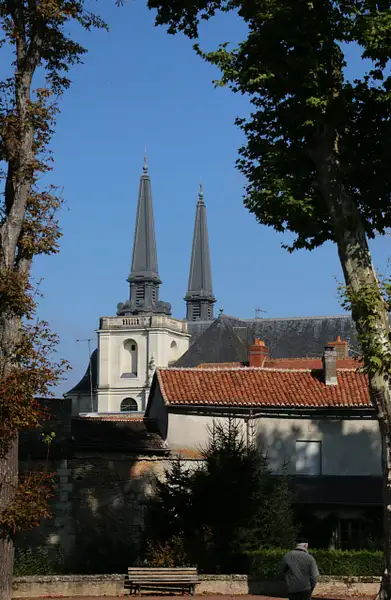


Cardinal Richelieu
Armand Jean du Plessis, Cardinal-Duke of Richelieu (9 September 1585 – 4 December 1642), commonly referred to as Cardinal Richelieu was a French clergyman, nobleman, and statesman. He was consecrated as a bishop in 1607 and was appointed Foreign Secretary in 1616. Richelieu soon rose in both the Catholic Church and the French government, becoming a cardinal in 1622, and King Louis XIII's chief minister in 1624. He remained in office until his death in 1642; he was succeeded by Cardinal Mazarin, whose career he had fostered.
|
Richelieu's outer wall, once surrounded by a moat |
Cardinal Richelieu, one of France's great political figures
This powerful cleric was the chief minister and after the king, (Louis XIII) was the most powerful person in France.The Cardinal de Richelieu was often known by the title of the King's "Chief Minister" or "First Minister". He sought to consolidate royal power and crush domestic factions. By restraining the power of the nobility, he transformed France into a strong, centralized state. His chief foreign policy objective was to check the power of the Austro-Spanish Habsburg dynasty, and to ensure French dominance in the Thirty Years' War that engulfed Europe. Although he was a cardinal, he did not hesitate to make alliances with Protestant rulers in attempting to achieve his goals.
|
The town takes its name from the Cardinal
Richelieu was also famous for his patronage of the arts; most notably, he founded the Académie Française, the learned society responsible for matters pertaining to the French language. Richelieu is also known by the sobriquet l'Éminence rouge ("the Red Eminence"), from the red shade of a cardinal's clerical dress and the style "eminence" as a cardinal. As an advocate for Samuel de Champlain and of the retention of New France, he founded the Compagnie des Cent-Associés and saw the Treaty of Saint-Germain-en-Laye return Quebec City to French rule under Champlain, after the settlement had been taken by the English in 1629. This in part allowed the colony to eventually develop into the heartland of Francophone culture in North America.
|
Richelieu's skyline
The Cardinal decided his position as a "prince of the church" and the king's right hand man demanded a great residence in Paris, now the Palais Royal and in 1625 he commissioned the famous architect Jacques Lemercier to design his palace in Paris and then re-design the town bearing his name.
|
Birds-eye view of Richelieu
The town is very interesting from an architectural point of view, it was built (1631-1642) in an innovative grid style which many modern cities now follow.. you have to be impressed by the great architect Lemercier's foresight. (Note: Photo from internet archive)
|
Richelieu's main gate |
Georgia in the main square of Richelieu |
Eglise Notre Dame, in the heart of Richelieu
The main church "Eglise Notre Dame" remains in much the same condition as when it was first built, much like the timber framed market hall across the square which is still used for the weekly market.
|
Notre Dame, in the heart of Richelieu |
One of Richelieu's four gates |
Interior, Church of Notre Dame |
Interior, Church of Notre Dame |
Spire, Church of Notre Dame |
Richelieu's Hotel de Ville (Town Hall) |